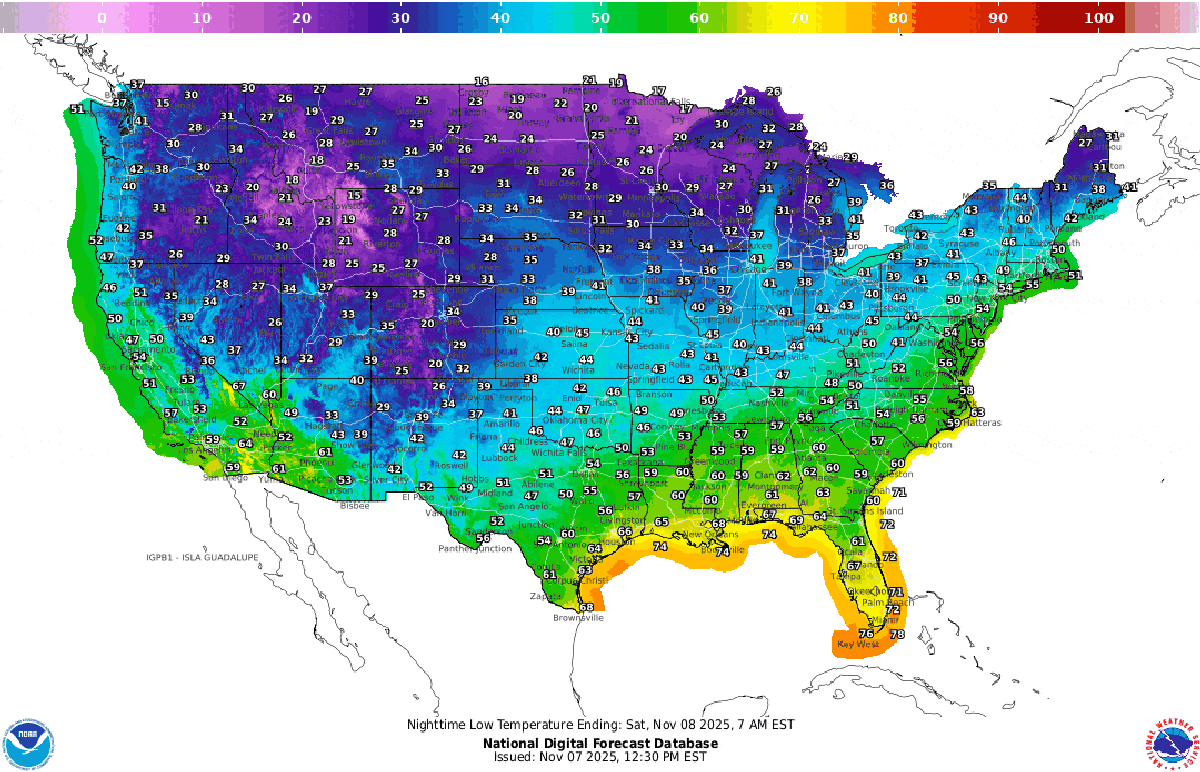Copyright Scientific American

A blast of frigid air will plunge into the central U.S. and move eastward over the next few days, potentially breaking records in a notably early cold snap. The most extreme cold will occur around November 10. The event will be particularly notable in the southeastern U.S., where daytime and nighttime low temperatures may break records that have been held for decades, including some that have been in place for more than a century. All told, half the residents of the contiguous U.S. could experience temperatures below freezing, according to calculations by the New York Times. The freezing temperatures may surprise many, given that swaths of the nation are currently relatively warm, with daily highs above average—parts of central Texas are even expected to crack 90 degrees Fahrenheit (32 degrees Celsius) on Friday, says Ashton Robinson Cook, a meteorologist at the National Weather Service’s Weather Prediction Center. On supporting science journalism If you're enjoying this article, consider supporting our award-winning journalism by subscribing. By purchasing a subscription you are helping to ensure the future of impactful stories about the discoveries and ideas shaping our world today. But cold air is currently brewing over Canada. Simultaneously, a mass of low-pressure air is developing over the Great Lakes. Because air swirls counterclockwise around low-pressure systems, Cook says, the alignment will sweep frigid air deep into the central U.S. next Sunday and, from there, into the southeastern states next Monday and Tuesday. Predominantly, the system will only affect temperatures, but parts of the Great Lakes region may see a few inches of snow. Cook notes that the precipitation forecast is still subject to change, however. Because severe low temperatures will be concentrated in the Southeast, Floridians will need to beware of a notable regional hazard: cold-shocked iguanas that fall out of trees after losing blood flow, which can begin at temperatures as high as 50 degrees F (10 degrees C). Any such animals should be left alone, experts note, as they might not take kindly to rescue attempts once they warm up again. Fortunately, the blast of frigid air will dissipate quickly, with temperatures rising throughout the southern and southeastern U.S. by next Wednesday. “The silver lining with this impending cold snap is that it should be relatively brief,” Cook says. “But it could be pretty intense.”



